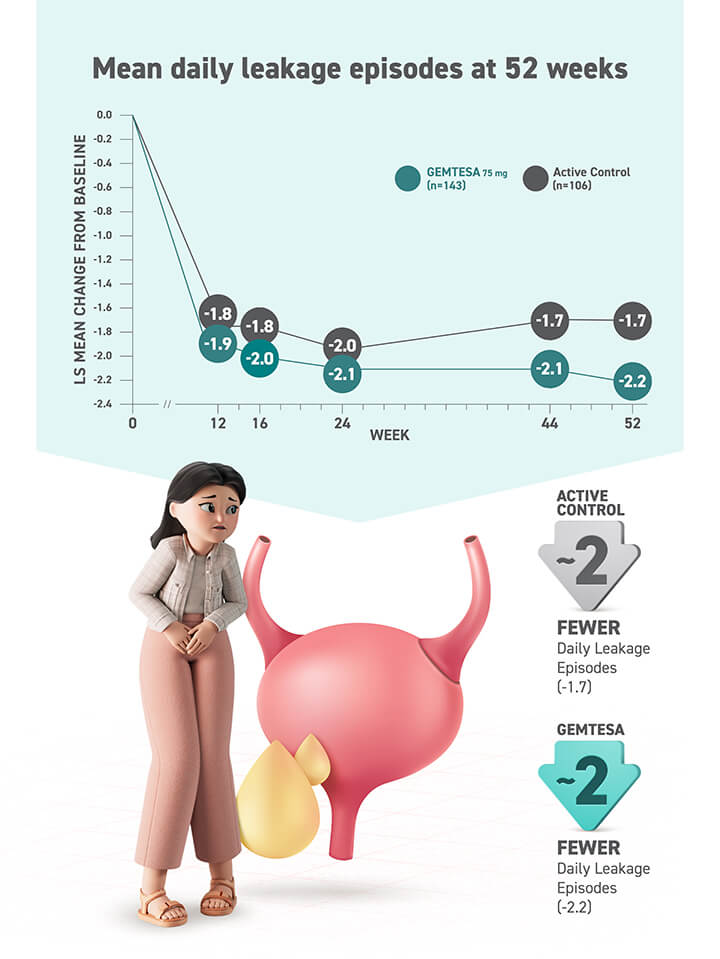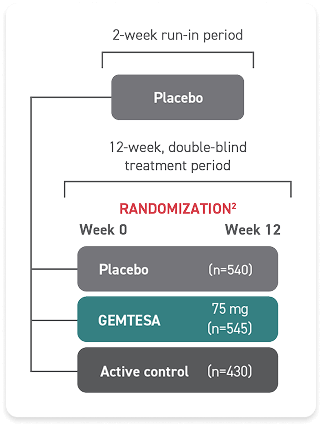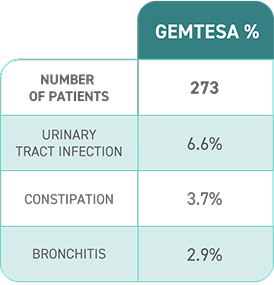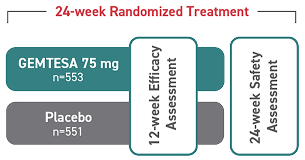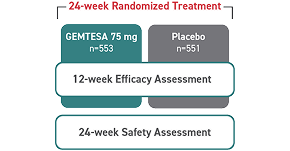SEE WHO MIGHT BENEFIT FROM GEMTESA

Effective OAB* treatment for a broad range of patients1-6
Men and women
Patients previously treated for OAB
Patients who are OAB treatment naïve
Men with OAB who are being pharmacologically treated for BPH
Older adults (65+)
No overall differences in safety or effectiveness of GEMTESA have been observed between patients aged 65+ and younger adult patients
Patients taking CYP2D6-metabolized medications
Patients currently taking medications metabolized through the CYP2D6 pathway for comorbidities (common comorbidities in patients with OAB include hypertension and depression)
Patients with hypertension†
In a 24-week study of OAB in men being treated for BPH, rates of hypertension were 9.0% with GEMTESA (n=553) vs 8.3% with placebo (n=551)
Concomitant use of GEMTESA increases digoxin maximal concentrations (Cmax) and systemic exposure as assessed by area under the concentration-time curve (AUC). Serum digoxin concentrations should be monitored before initiating and during therapy with GEMTESA and used for titration of the digoxin dose to obtain the desired clinical effect. Continue monitoring digoxin concentrations upon discontinuation of GEMTESA and adjust digoxin dose as needed.1
* The 3 key symptoms of OAB include urgency, frequency, and UUI.6
† In a 4-week, randomized, placebo-controlled, ambulatory BP study in OAB patients (n=200), daily treatment with GEMTESA 75 mg was not associated with clinically significant changes in BP. Subjects enrolled in this study had a mean age of 59 years and 75% were female. Thirty-five percent of subjects had preexisting hypertension at baseline and 29% of all subjects were taking at least 1 concomitant antihypertensive medication.1
BP=blood pressure; BPH=benign prostatic hyperplasia; OAB=overactive bladder, UUI=urge urinary incontinence.

